Core-Cast is our nowcasting model to track the Fed's preferred inflation gauges before and through their release date. The heatmaps below give a comprehensive view of how inflation components and themes are performing relative to what transpires when inflation is running at 2%.
Most of the Personal Consumption Expenditures (PCE) inflation gauges are sourced from Consumer Price Index (CPI) data, but Producer Price Index (PPI) input data is of increasing relevance, import price index (IPI) data can prove occasionally relevant. There are also some high-leverage components that only come out on the day of the PCE release. Reach out to us if you would like to become a Premium Donor to support and access all of our research content.
- Summary
- For the Detail-Oriented: Core PCE Heatmaps
- For the Detail-Oriented: Core Services Ex Housing PCE Heatmaps
- PCE Inflation Charts - By Causal Theme
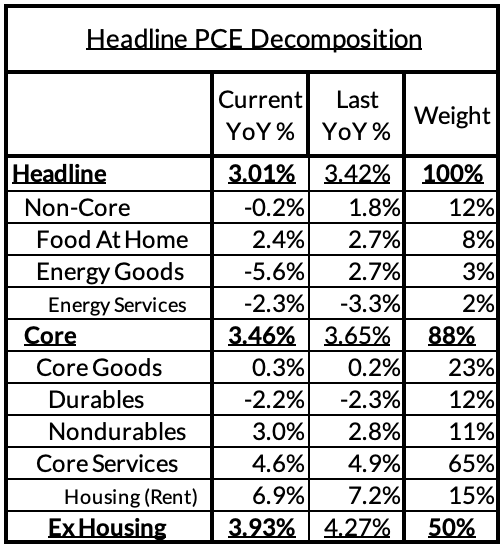

Summary
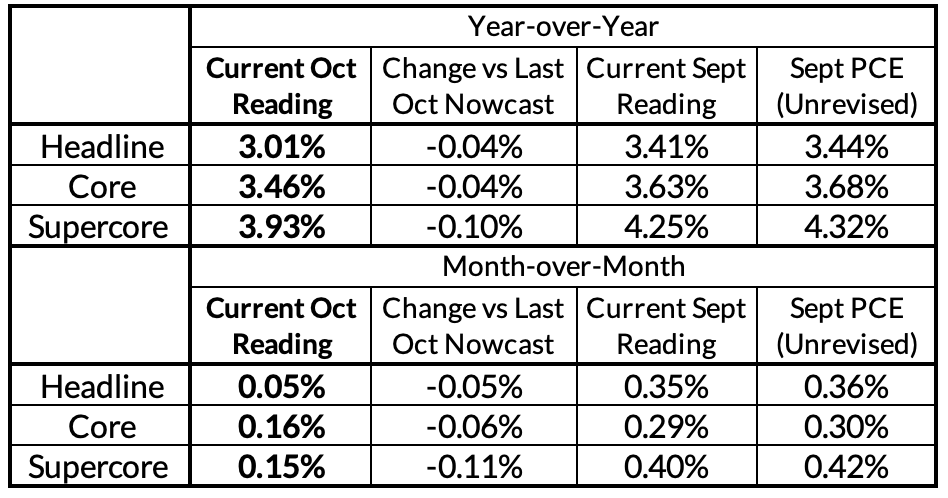
We received even more welcome news about the disinflationary pace today after some very surprising and welcome downside revisions showed up yesterday. The segments of core PCE most vulnerable to revision (professional, financial, and transportation services) or else the "darkest" for us to nowcast (input cost indices, imputed financial services) showed more favorable signs today. While we saw some direct evidence of upside revision in Q3, that proved to be a more limited phenomenon and independent sources of revision surprised to the downside yesterday.
- Year-over-year Core PCE readings will finish 2023Q4 around 3.4%, possibly even falling to 3.3%. That is 30-40 basis points below the Fed's September projection.
- 3-6 month annualized rates of Core PCE are between 2.3-2.5%, uniformly below the Fed's 2024Q4 projections (2.6%). Given the likely deceleration in rent, along with further supply-chain-driven disinflation (spanning goods and services), the Fed's 2024Q4 projections look high relative to reasonable baseline scenarios. This will serve as an additional motivation for easing policy sooner, as early as March but more likely at the May 2024 FOMC meeting.
For the Detail-Oriented: Core PCE Heatmaps
Right now Core PCE (PCE less food products and energy) is running at a 3.46% year-over-year pace as of October, 146 basis points above the Fed's 2% inflation target for PCE. That overshoot is disproportionately driven by catch-up rent CPI inflation in response to the surge in household formation (a byproduct of rapidly recovering job growth), which caused market rents to surge in 2021. Rent is contributing 60 basis points to the 146 basis point core PCE overshoot.
There are other contributors to the overshoot:
- Some more supply-driven (automobile bottlenecks are likely to explain only 1 basis point now, while food inputs likely added 19 basis points to the overshoot)
- Some more demand-driven (in-person recreation and travel services likely added 11 basis points to the overshoot)
- So with demand- and supply-side drivers (consumer staples and discretionary goods likely added 25 basis points).
- Some oddball segments have offsetting effects (measured financial service charges now likely added 2 basis points, while contributions from input cost indices and imputed financial services likely added 13 basis points to Core PCE vs 2%-consistent outcomes).
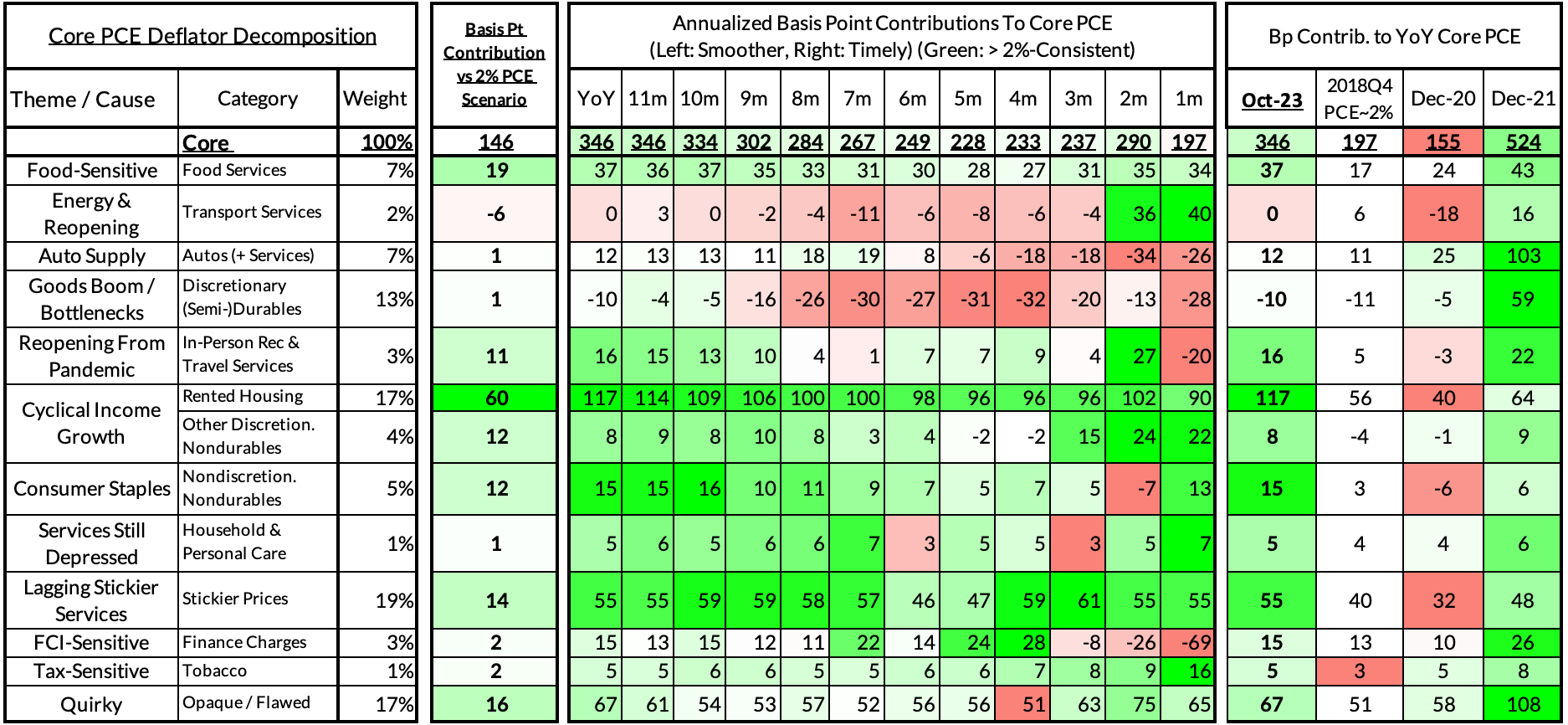
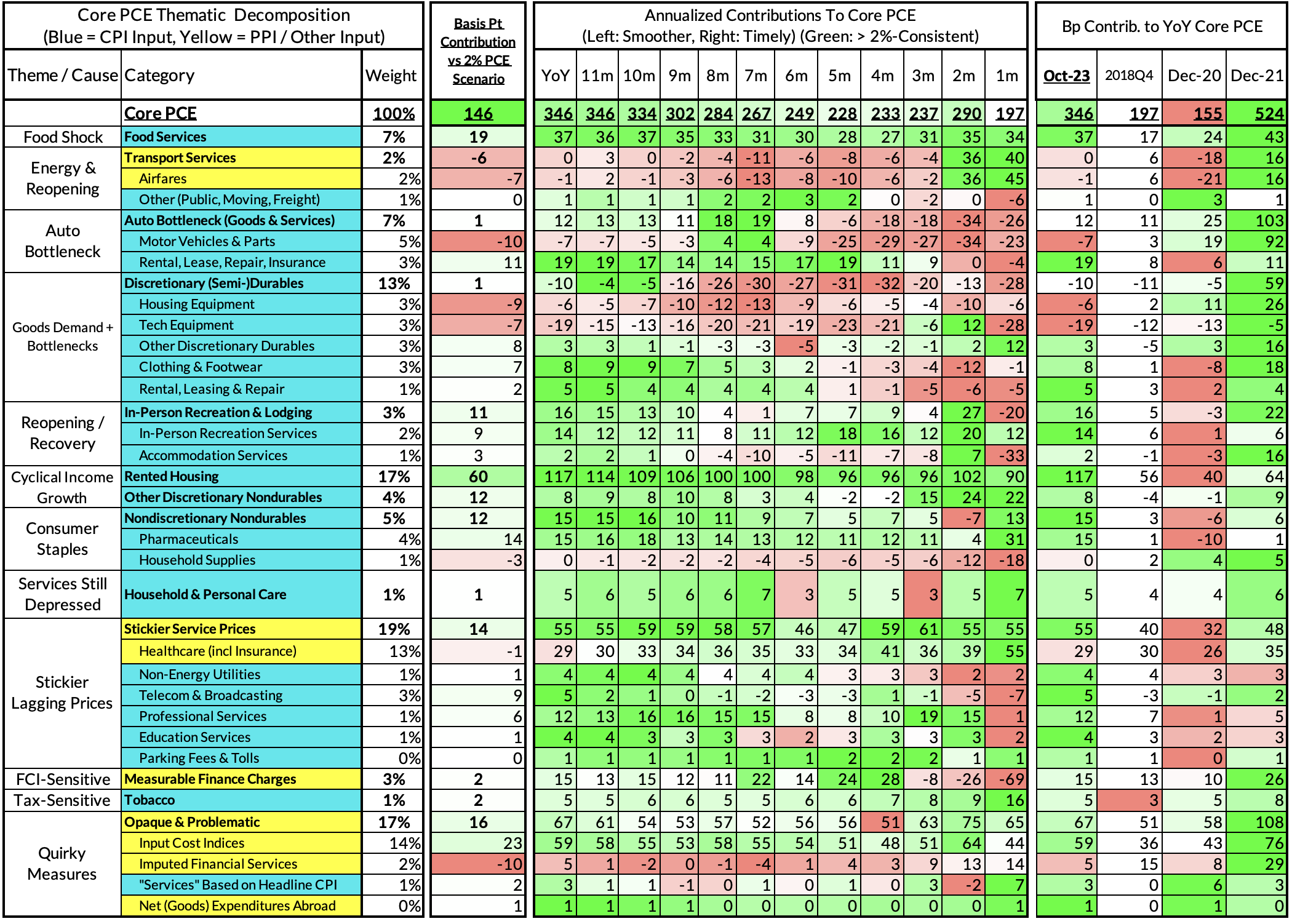
The final two heat maps below gives you a sense of the overshoot on shorter annualized run-rates. October monthly annualized core PCE yielded a 3 basis point undershoot vs 2% target inflation (1.97% annualized).
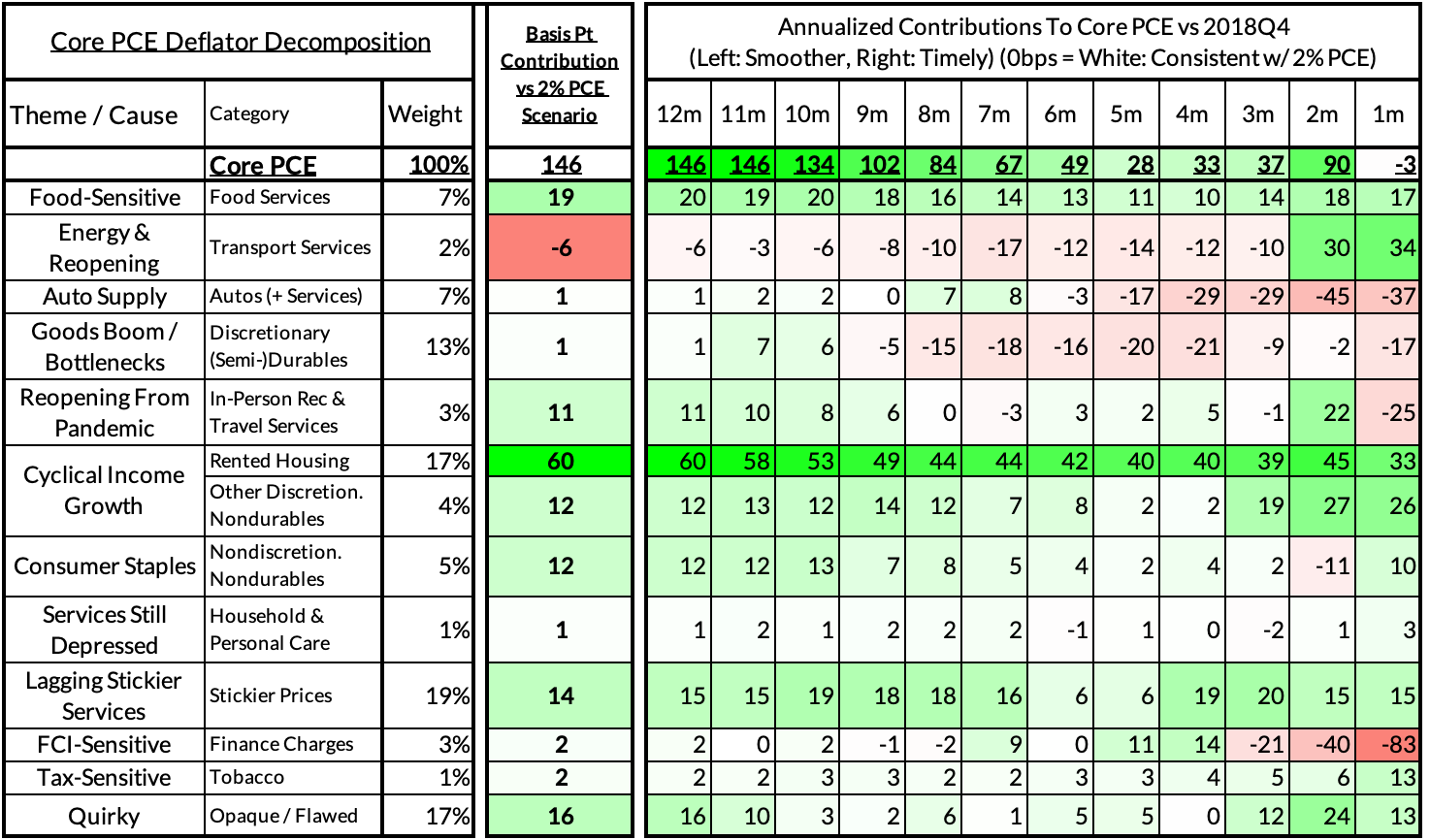
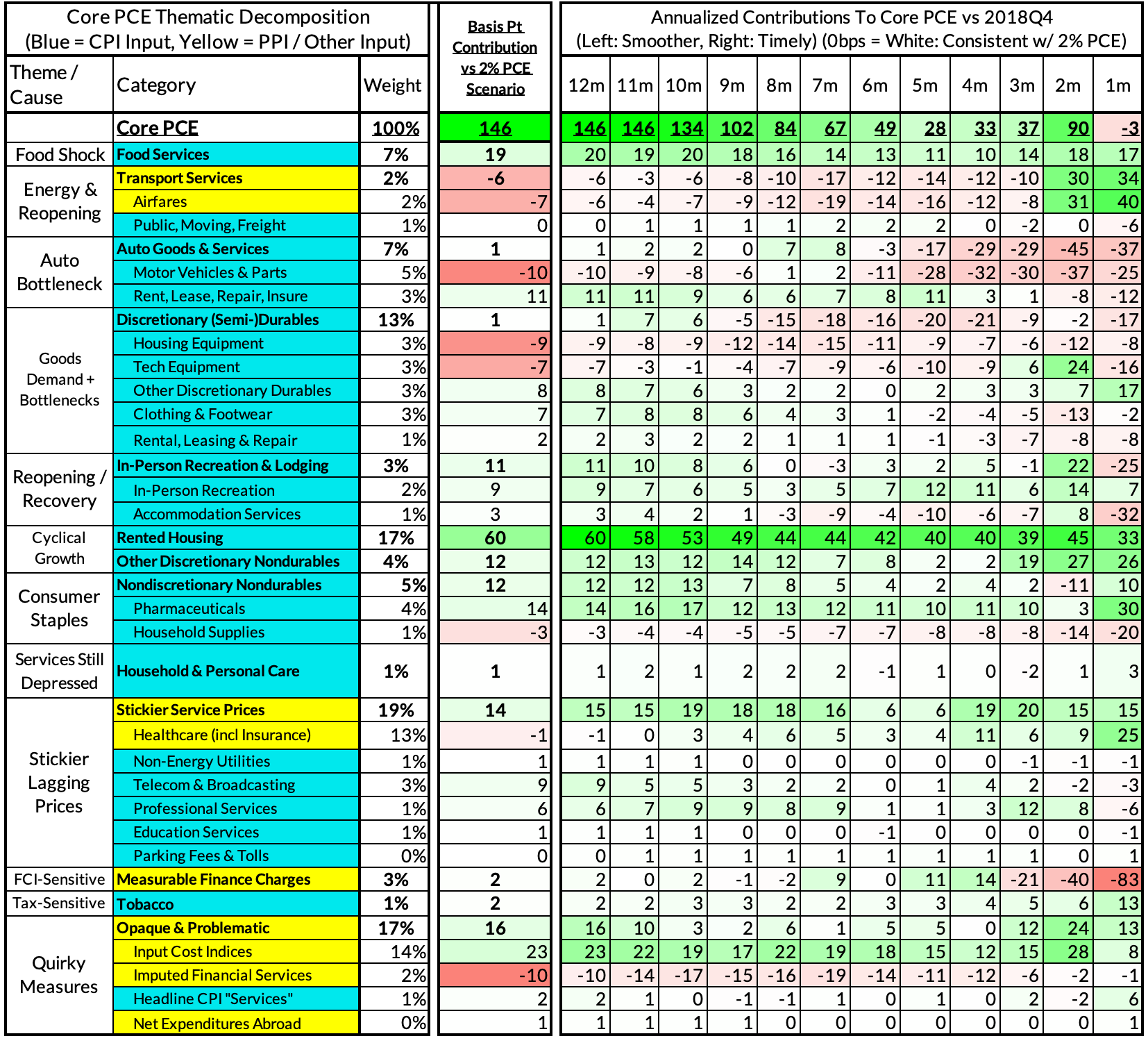
For the Detail-Oriented: Core Services Ex Housing PCE Heatmaps
The October growth rate in "Core Services Ex Housing" ('supercore') PCE ran at 3.93% year-over-year, a 179 basis point overshoot versus the 2.56% run rate that coincided with ~2% headline and core PCE.
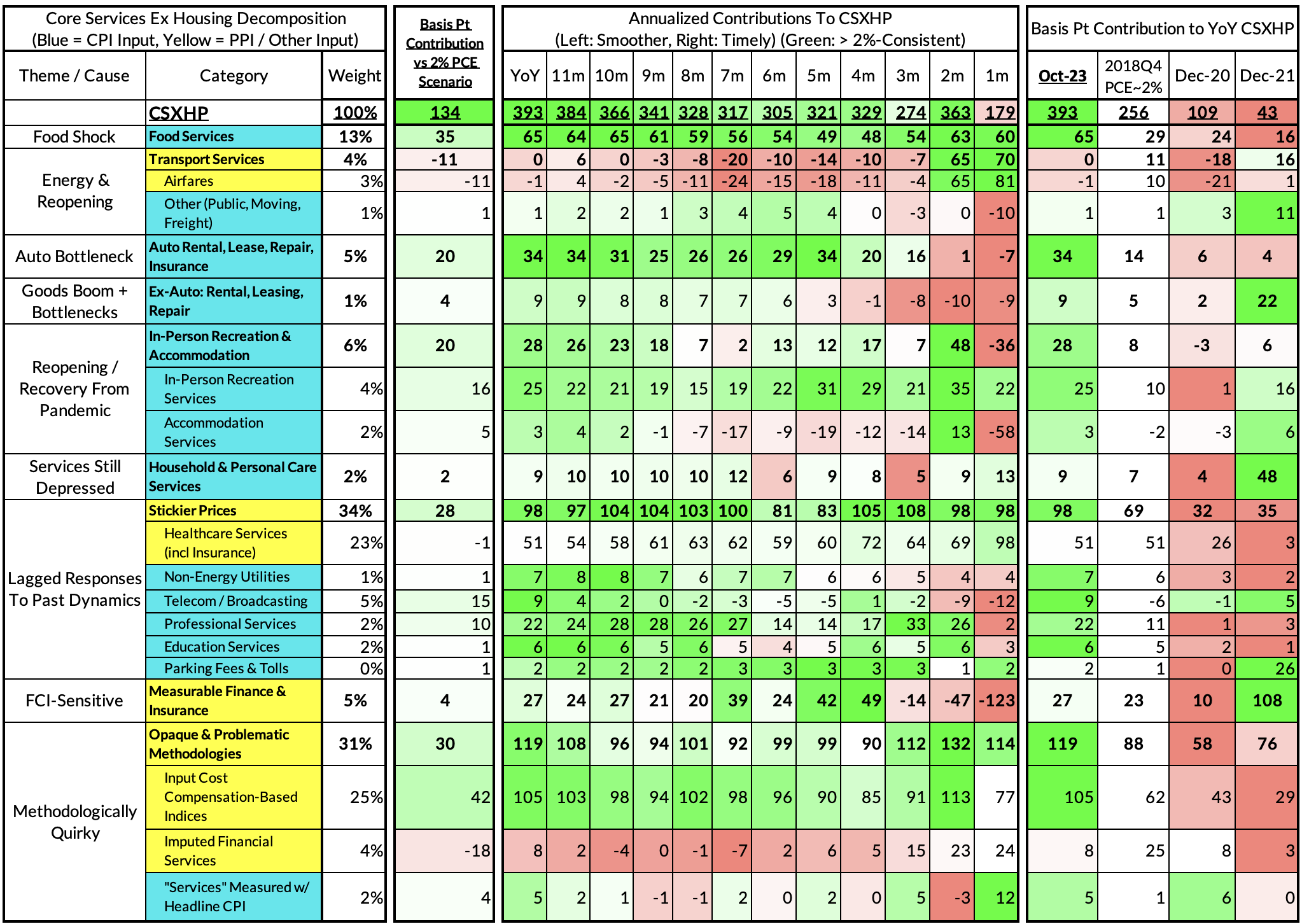
September monthly supercore ran at a 1.79% annualized rate, an 80 basis point undershoot of what would be consistent with 2% headline and core PCE.
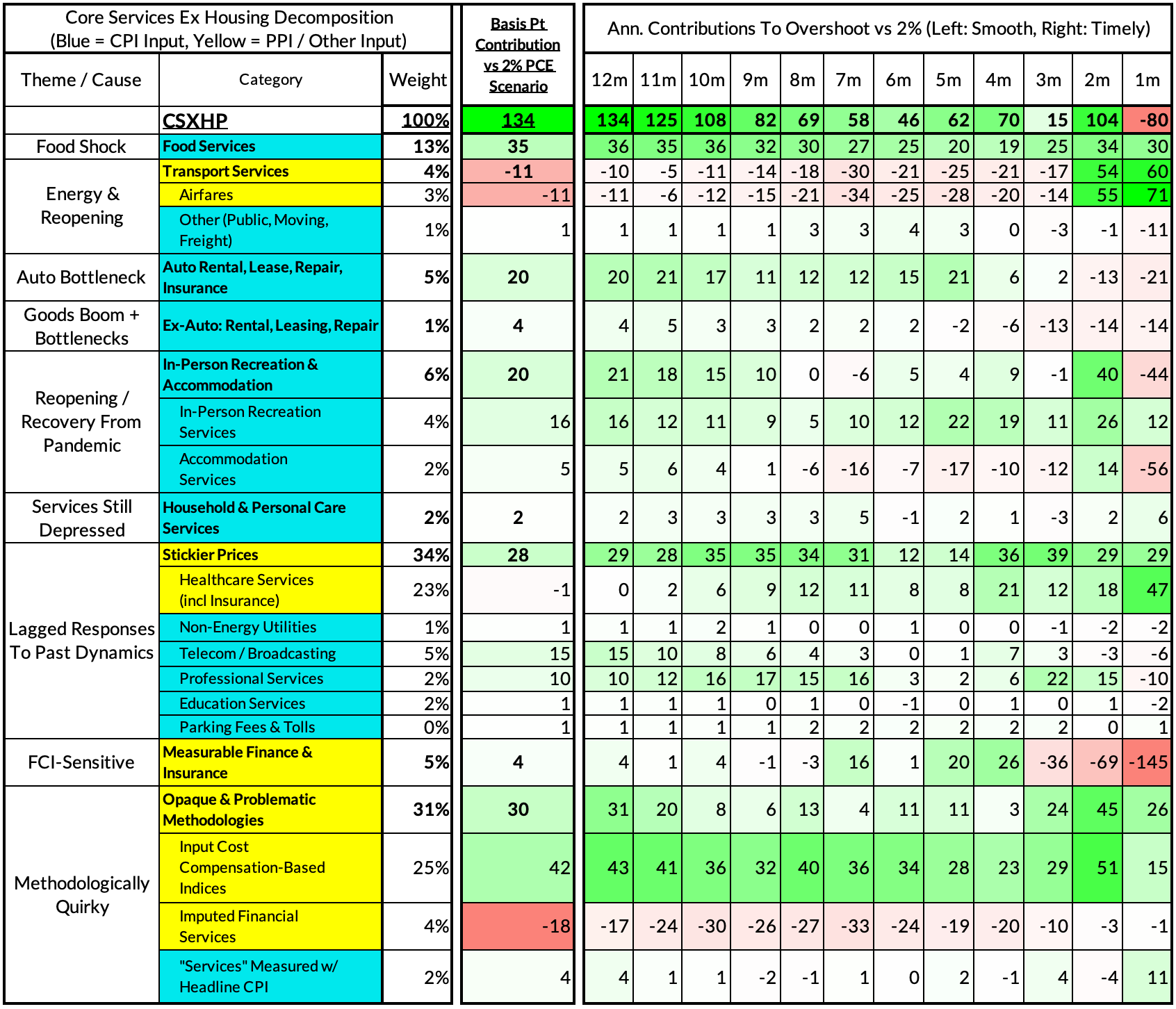
PCE Inflation Charts - By Causal Theme















